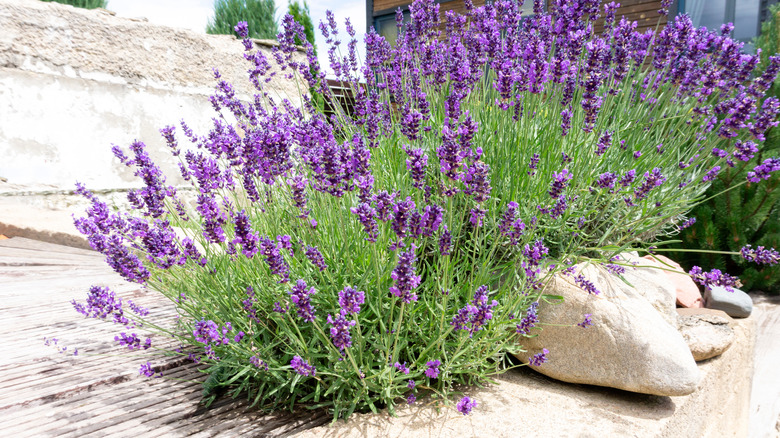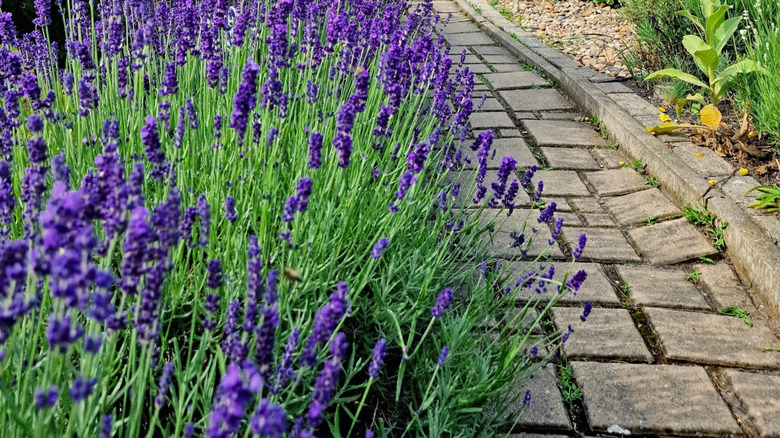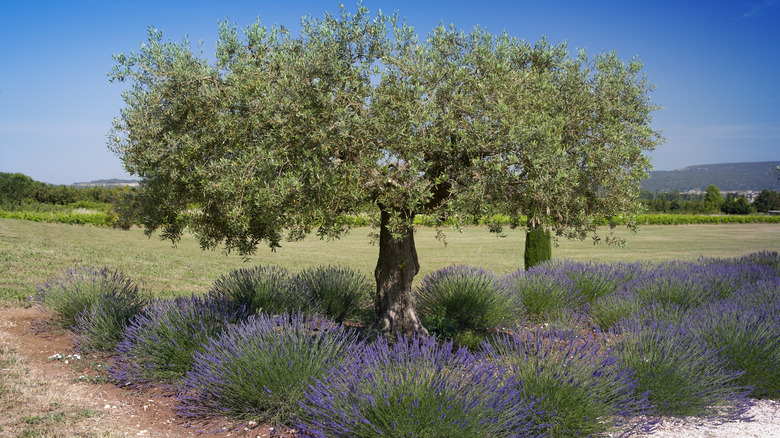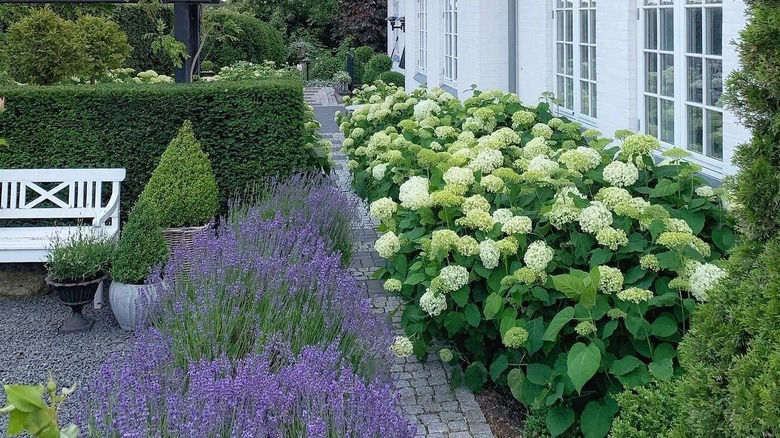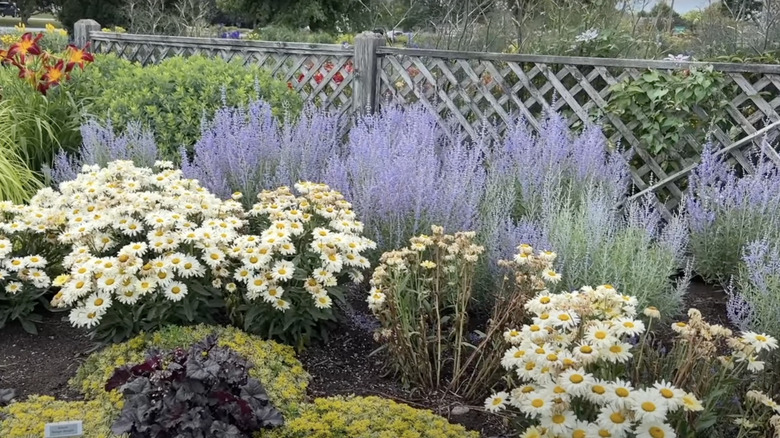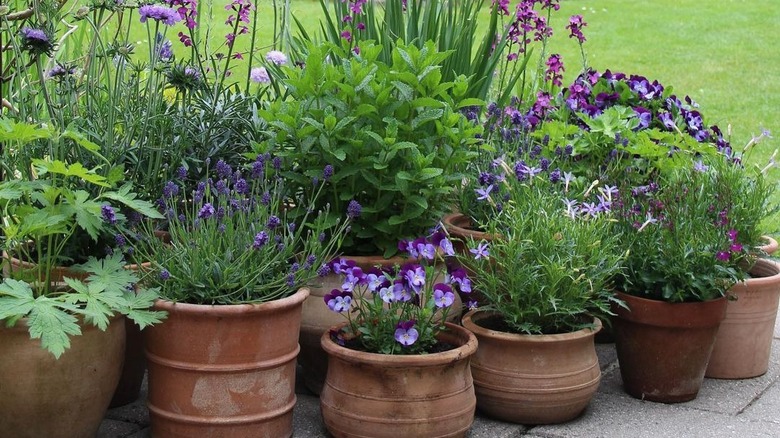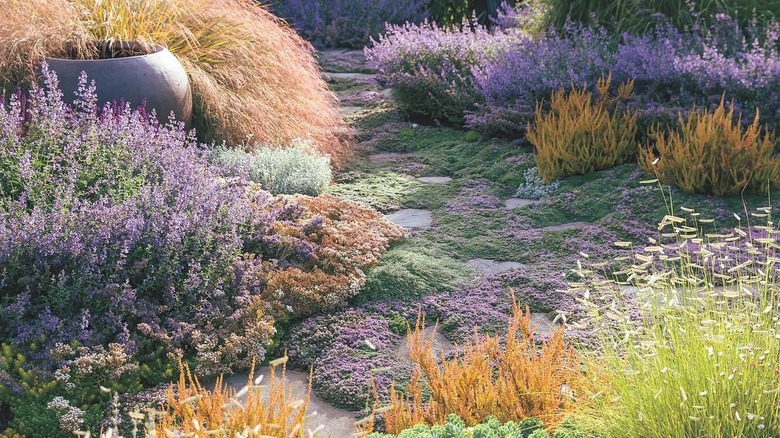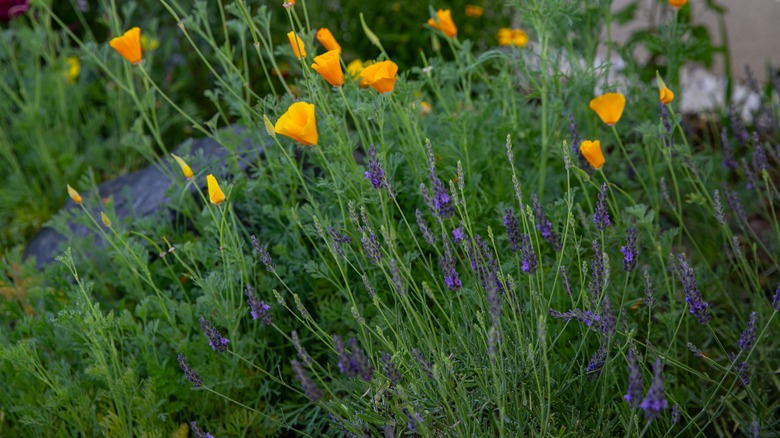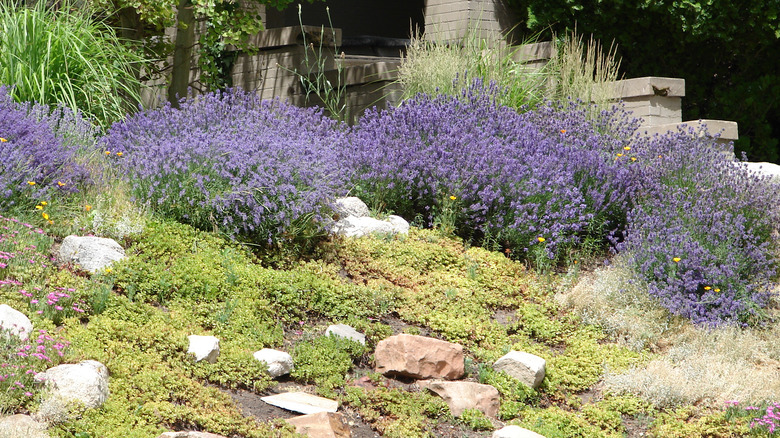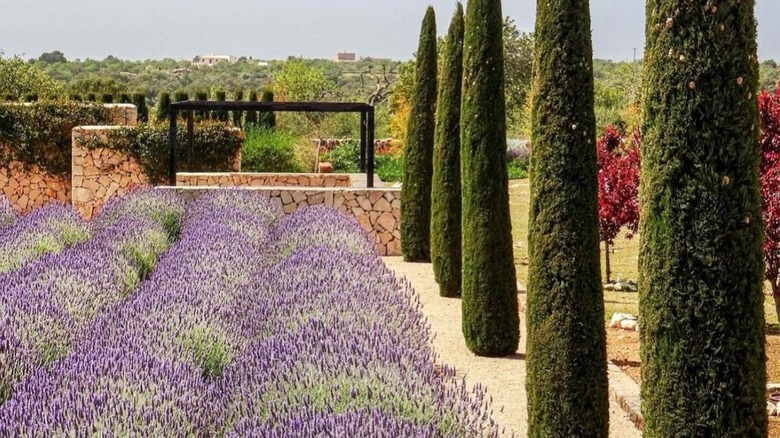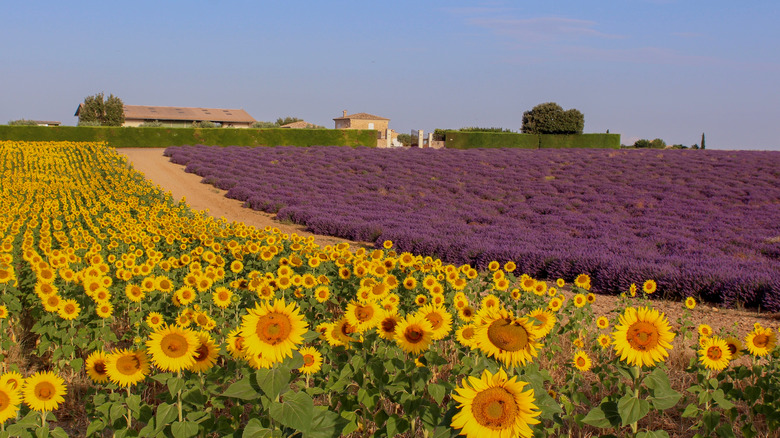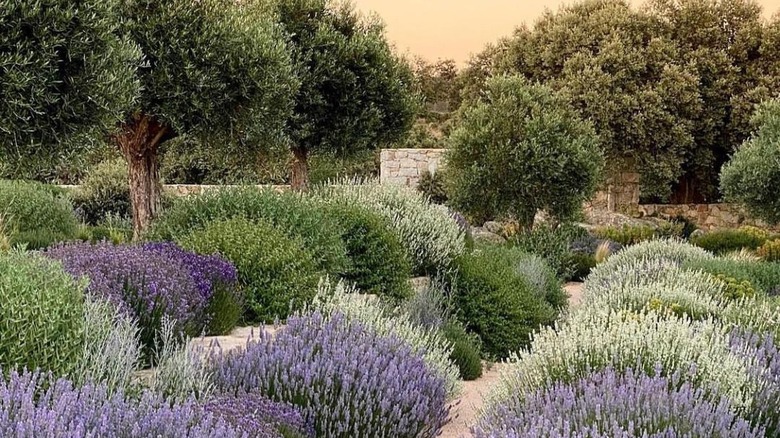11 Creative Ways To Incorporate Lavender Into Your Landscape For A Pop Of Purple
For a lovely smell and even lovelier appearance, consider adding lavender to your landscape. This aromatic, flowering plant is well-loved for its calming properties and fragrant blossoms. If you're searching for the perfect way to add a pop of purple to your outdoor space, few flowers and herbs can compete with the timeless look of lavender. It can help you capture the free spirit of the Mediterranean or add long-lasting beauty to a flower garden.
When curating your landscape, it's important to consider several key factors for a successful garden. From studying the surrounding greenery to your specific climate, creating a flourishing lavender garden requires careful planning. For example, some plants pair beautifully with lavender while others are better planted at a healthy distance. Explore a wide range of landscaping ideas and find the perfect way to incorporate lavender into your unique space.
A complementary green and purple pathway
Create a complementary garden with primarily purple and green flora. Jennifer of Pond and Garden Ideas suggests creating a coastal-inspired garden with Russian sage, salvia, chives, and Eastern hay-scented fern. You can frame your stone pathway with a cohesive array of herbs and purple flowers. In addition to the aforementioned complementary flora, you can pair lavender with a wide range of aromatic, edible herbs. Rosemary and thyme also thrive in the same environment as lavender. Learn how to create a raised garden bed and line your pathway for an organized way to display the pops of purple.
Try underplanting trees with lush lavender
Add a beautiful splash of color to an underutilized space. The concept of "underplanting" maximizes the area underneath your existing trees. Underplanting allows you to add variety to your garden in a space-savvy way. Rather than keeping the space under your tree filled with lackluster soil, you can plant herbaceous flora like lavender. As long as the space under your tree gets sunlight throughout the day, lavender can flourish. Lavender is low-maintenance and won't draw moisture from your tree. In fact, outdoor lavender rarely needs to be watered at all. Olive trees, as pictured above, are ideal for underplanting with lavender due to similar growing conditions.
Create a walkway between lavender and hydrangeas
Rather than creating a symmetrical walkway, try framing your stone path with two different types of contrasting flowers. @gncgarden on Instagram shares a stunning landscape with lavender on one side and white hydrangeas on the other. Plant the taller flowers on the side of the house for optimal visual balance. The lavender on the opposite side will fill space without overwhelming the landscape. However, make sure your hydrangeas are in a separate bed, because the two plants require drastically different conditions. Hydrangeas need significantly more water. Lavender also prefers alkaline soil, whereas hydrangeas need an acidic environment.
Plant whimsical lavender and daisies against a fence
Lavender and daisies make the perfect pair. If you love the perfectly imperfect look of overgrown wildflowers, try accentuating your fence with a display of lavender and wild daisies. Heidi from Garden Crossings LLC showcases her version of this landscaping concept on YouTube. The African Daisy is recommended by Garden Design as an excellent companion to lavender. Dasies have a longer blooming period, ensuring visual interest even after the lavender has ceased to bloom. While lavender blooms only for three to four weeks, daisies blossom from early spring to late October.
Plant different kinds of purple flowers in clay pots
Take a monochromatic approach to landscaping with an array of purple-toned flowers, including lavender. For a low-maintenance look, plant your purple flora in clay pots. This will create an easy-to-maintain, natural appearance. If you choose to grow your lavender in pots, be mindful that they require more water than lavender planted in the ground. Make sure to add water whenever the soil gets dry and provide proper drainage. Other purple flowers to consider for your potted arrangement include pansies, hyacinths, allium, and phlox. Always place the shorter flowers closer to the front and the taller flowers in the back.
A creeping thyme path framed by lavender and wild grasses
Cover your stone path in creeping thyme for an additional touch of purple. Frame the thyme-covered path with lavender for an eye-catching, monochromatic look. If you're looking for a groundcover option that will match the lavender and thyme aesthetic, try wild grasses. They will add a wild, organic texture without adding a competing color. This tactic is a great way to let the purple tone of overgrown lavender pop. However, many ornamental grasses, including the popular pampas grass, are considered invasive in the US. Consider maiden grass or mat rush as non-invasive alternatives.
A stone garden with lavender and California poppies
If you are searching for wildflowers to frame your stone garden, we have an effortlessly beautiful solution. Royal purple lavender looks stunning against contrasting California poppies. The orange and purple combination is a foolproof way to create a whimsical garden. Plus, California poppies are equally low-maintenance, requiring very little water to thrive. Keep in mind that you may have to re-seed your California poppies annually, unless they are grown in a warm, dry climate. Alternately, you can opt for hardier perennial poppies, such as the Oriental variety.
A romantic, untamed garden with lavender and sedum
Lavender and sedum are excellent companion plants. Whether you prefer the look of upright or creeping sedum, lavender will prosper next to either. Sedum comes in a variety of colors, including red, pink, or white. Gardenista recommends mixing pink sedum with lavender and silver perennial grass for a romantic, ethereal look. A pop of purple always looks well-curated next to pink and neutral tones. Another benefit to planting sedum next to lavender is that they continue to bloom after the lavender has passed its peak season.
Take inspiration from Majorca and the Mediterranean
Borrow inspiration from the Mediterranean by planting thick rows of purple lavender. For some sunny inspiration, @mashambadesign on Instagram created an amazing landscape on the island of Majorca. To mimic this look, consider adding a row of cypress trees. If cypress trees are out of your budget, opt for a row of potted olive trees as a more accessible alternative. The minimalist appearance of Mediterranean flora is timeless and ideal for regions that get lots of sun. As a finishing touch, include a wall of warm-toned stones for a finca-inspired feel.
A Provence-style combination of lavender and sunflowers
The lavender fields in the south of France are contrasted by rows of sunflowers. Capture this purple and yellow Provencal look by planting both flowers side-by-side in your own garden. Lavender is an excellent companion plant to thrive alongside sunflowers. "Gardenia" recommends lavender as one of the top plants to pair with sunflowers, especially if you want to plant a garden that will attract pollinators. As long as your garden gets full sun, you can create a stunning landscape that attracts insects and other essential wildlife.
Frame your lavender garden with olive trees
As mentioned previously, lavender and olive trees make a great duo. If you live in a mild climate with warm summers, this pairing is ideal. It is a tried-and-true landscaping option that will create a lush, European-style atmosphere. Both plants thrive in well-drained, alkaline soil. Make sure to leave enough space in between rows of lavender so you can stroll through your aromatic garden. Dwarf variations can be placed 18 inches apart, whereas full-sized lavender should have 3-4 feet of space. Sprinkle sand or gravel in between the rows to create clear pathways. Your lavender garden should be designed to be enjoyed.
